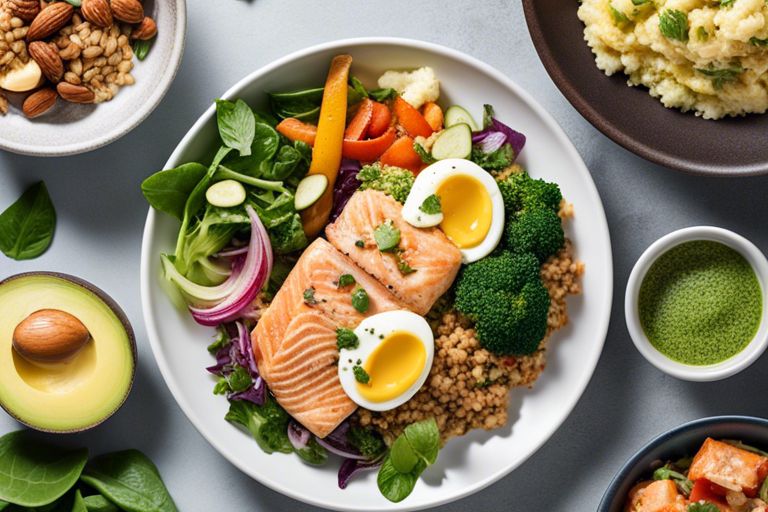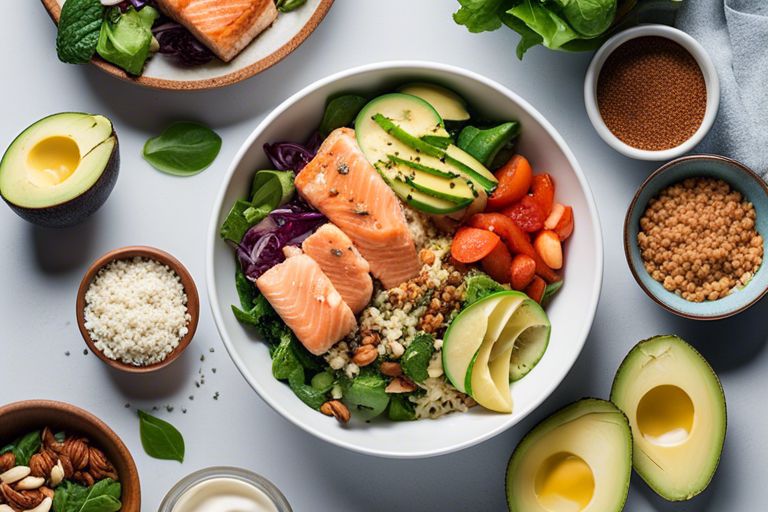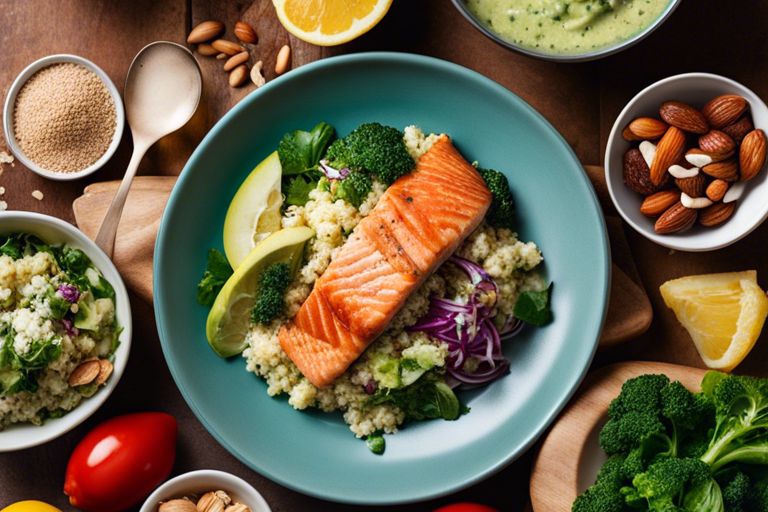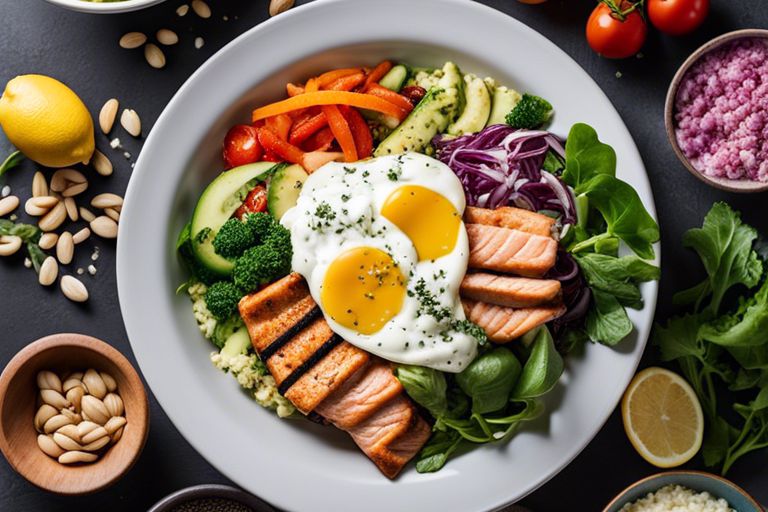Harnessing the power of low-carb ketogenic recipes for your keto diet can be a game-changer for those seeking to achieve their health and wellness goals. By incorporating these recipes into your meal planning, you can take advantage of the numerous benefits of the keto diet, including weight loss, improved energy levels, and enhanced mental clarity. Additionally, low-carb ketogenic recipes offer a wide variety of delicious and satisfying options, making it easier to adhere to the keto lifestyle long-term. Whether you are well-versed in the keto diet or are just beginning your journey, incorporating these recipes can help you achieve success in reaching your health and wellness aspirations.
Key Takeaways:
- Weight Loss: Low-carb ketogenic recipes can be effective for weight loss by promoting fat burning and reducing hunger cravings.
- Blood Sugar Control: Following a low-carb ketogenic diet can help improve blood sugar levels and insulin sensitivity for individuals with diabetes or prediabetes.
- Mental Clarity: Ketogenic recipes can provide mental clarity and improved focus due to the use of ketones as a brain fuel source.
- Increased Energy: By entering ketosis, the body can utilize stored fat for energy, leading to improved energy levels throughout the day.
- Improved Overall Health: Low-carb ketogenic recipes can lead to improved cholesterol levels, reduced inflammation, and overall better health markers.
Understanding the Ketogenic Lifestyle
The ketogenic lifestyle is centered around the principles of consuming low-carb, high-fat meals in order to achieve a state of ketosis. This metabolic state allows the body to burn fats for energy rather than carbohydrates, and has been linked to a variety of health benefits.
Ketosis and Metabolic Health
Any individual looking to improve their metabolic health may benefit from adopting a ketogenic lifestyle. When the body enters a state of ketosis, it becomes more efficient at burning fat for fuel, which can lead to weight loss and improved insulin sensitivity. Research suggests that following a ketogenic diet may also lead to reductions in inflammation and improved heart health.
Macronutrients and the Keto Ratio
One of the key aspects of the ketogenic lifestyle is maintaining a specific ratio of macronutrients, typically around 70-75% of calories from fat, 20-25% from protein, and 5-10% from carbohydrates. This helps to ensure that the body remains in ketosis, as the low-carb, moderate-protein, and high-fat intake is essential for the metabolic processes that occur in this state.
Lifestyle changes, such as incorporating low-carb ketogenic recipes into your meal plan, can help you to adhere to the keto ratio and experience the benefits of the ketogenic lifestyle. By focusing on consuming whole, nutrient-dense foods that are low in carbohydrates and high in healthy fats, you can support your body’s transition into ketosis and optimize your metabolic health.

The Benefits of Low-Carb Ketogenic Recipes
Some individuals may be hesitant to adopt a low-carb ketogenic diet due to misconceptions about its benefits. However, the truth is that there are numerous advantages to incorporating low-carb ketogenic recipes into your meal plan. From weight loss and appetite control to improved blood sugar and insulin levels, the benefits are undeniable.
Weight Loss and Appetite Control
Recipes developed for a low-carb ketogenic diet are specifically designed to promote weight loss and control appetite. By reducing carbohydrate intake and increasing healthy fats and protein, these recipes can help individuals feel satisfied and full for longer periods of time. Additionally, the ketones produced from following a low-carb ketogenic diet can also help suppress appetite, leading to fewer calorie intake and ultimately, weight loss.
Blood Sugar and Insulin Levels
The low-carb ketogenic diet has been shown to have a positive impact on blood sugar and insulin levels. The recipes included in this diet focus on minimizing sugar and refined carbohydrates, which can lead to more stable blood sugar levels and reduced insulin spikes. This is particularly beneficial for individuals with diabetes or insulin resistance, as it can help improve insulin sensitivity and lower the risk of complications.
With the consumption of low-carb ketogenic recipes, individuals can experience improved weight management, reduced cravings, and better blood sugar control. These recipes have been shown to have a positive impact on various health markers, making them a valuable choice for those looking to improve their overall well-being.
Crafting a Keto-Friendly Kitchen
Despite the initial adjustment period, transitioning to a low-carb ketogenic diet can be made much easier by creating a keto-friendly kitchen. By stocking your kitchen with the right ingredients, tools, and resources, you can set yourself up for success on your keto journey.
Essential Ingredients and Shopping Tips
Ingredients such as avocados, coconut oil, and grass-fed butter are essential for creating delicious, keto-friendly meals. When shopping for keto ingredients, it’s important to read labels carefully and look for products that are low in carbohydrates and free from added sugars. Additionally, consider incorporating a variety of nuts, seeds, and low-carb vegetables into your shopping list to ensure you have a wide range of options for meal preparation.
- Fresh vegetables such as spinach, broccoli, and cauliflower
- High-quality proteins like grass-fed beef, pastured poultry, and wild-caught fish
- Healthy fats such as olive oil, avocado oil, and ghee
The key to successful keto shopping is to focus on whole, nutrient-dense foods while avoiding processed and high-carb items. Remember, your ingredients are the building blocks of your keto lifestyle, so choose wisely.
Meal Planning and Preparation Strategies
An important aspect of maintaining a keto-friendly kitchen is to implement effective meal planning and preparation strategies. Start by designating a specific day each week to plan your meals and create a shopping list based on your chosen recipes. This will not only save you time and energy throughout the week but also ensure that you have all the necessary ingredients on hand.
To further streamline your meal preparation, consider batch cooking and meal prepping on the weekends. By preparing large quantities of keto-friendly dishes ahead of time, you can easily portion out your meals for the week and avoid the temptation of reaching for unhealthy options when time is tight. These strategies will not only support your keto goals but also help you stay on track with your dietary and lifestyle choices.

Overcoming Common Challenges
Your journey towards a low-carb ketogenic lifestyle will likely come with its fair share of challenges. However, with the right mindset and strategies, you can overcome these obstacles and stay on track towards your health and wellness goals.
Navigating Social Situations and Dining Out
Overcoming the challenges of social situations and dining out while following a low-carb ketogenic diet can be daunting, but it’s definitely possible. One effective strategy is to plan ahead by researching restaurant menus and making special requests to accommodate your dietary needs. Additionally, don’t hesitate to communicate your dietary preferences to friends and family, and offer to bring a keto-friendly dish to gatherings.
Dealing with Plateaus and Setbacks
One common challenge that many individuals face on their low-carb ketogenic journey is dealing with plateaus and setbacks. It’s important to remember that these roadblocks are normal and can be overcome with patience and persistence. A key strategy is to reassess your meal plans and exercise routine, and make necessary adjustments to kickstart your progress once again.
A support system of like-minded individuals can also provide encouragement and motivation during times of plateau or setback. Connecting with keto communities online or joining local support groups can offer valuable insights and tips for overcoming these challenges.

Why Choose Low-Carb Ketogenic Recipes for Keto?
On the whole, low-carb ketogenic recipes are an excellent choice for those following a keto lifestyle due to their ability to help regulate blood sugar levels, promote weight loss, and improve overall health. By focusing on high-fat, moderate-protein, and low-carb foods, individuals can enter a state of ketosis, where the body uses fat for fuel instead of carbohydrates. This shift in metabolism has been shown to have numerous health benefits, including improved insulin sensitivity and reduced inflammation. Additionally, a review of ketogenic diet and lifestyle published in the PMC highlights the positive impact of adopting a ketogenic diet for various health conditions. To read more on the topic, check out A Review of Ketogenic Diet and Lifestyle – PMC.
FAQ
Q: What is the benefit of choosing low-carb ketogenic recipes for keto?
A: Low-carb ketogenic recipes can help the body enter a state of ketosis, where it burns fat for fuel, leading to weight loss and increased energy levels.
Q: How do low-carb ketogenic recipes differ from regular recipes?
A: Low-carb ketogenic recipes are specifically designed to minimize carbohydrate intake while increasing healthy fat and protein consumption, making them ideal for those following a keto diet.
Q: Are low-carb ketogenic recipes suitable for everyone?
A: Low-carb ketogenic recipes may not be suitable for individuals with certain medical conditions or dietary restrictions. It is best to consult with a healthcare professional before starting a low-carb ketogenic diet.
Q: Can low-carb ketogenic recipes be satisfying and delicious?
A: Yes, low-carb ketogenic recipes can be just as satisfying and delicious as traditional recipes, often utilizing flavorful ingredients like avocados, cheese, and nuts to create tasty meals.
Q: What are some common ingredients used in low-carb ketogenic recipes?
A: Common ingredients include lean meats, fish, low-carb vegetables, healthy fats (such as avocado oil and coconut oil), and dairy products like cheese and yogurt.
Q: Will low-carb ketogenic recipes help with weight loss?
A: Yes, because the ketogenic diet encourages the body to burn fat for fuel, it can be effective for weight loss when combined with a calorie-controlled eating plan.
Q: Are there any potential drawbacks to choosing low-carb ketogenic recipes?
A: Some individuals may experience the “keto flu” during the initial stages of the diet, which can cause fatigue, headaches, and irritability. It is important to stay well-hydrated and ensure adequate electrolyte intake to minimize these symptoms.

Leave a Reply